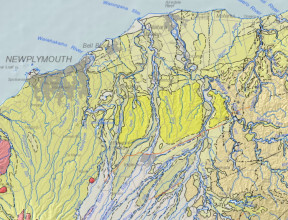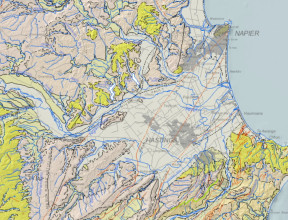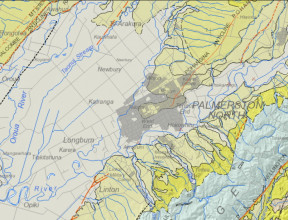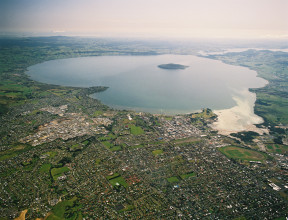
Whanganui
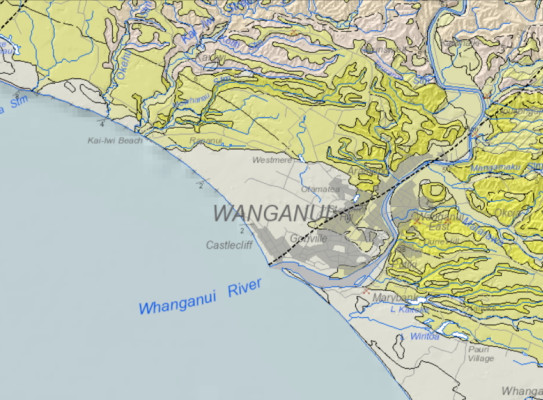
Geological Summary
The geology of Whanganui city is dominated by Mid-Late Quaternary alluvial sediments adjacent to the Whanganui River with dune and marine sediments nearer the coast. These overlie older Quaternary sediments that are exposed in lower hills and these in turn overlie Pliocene alternating mudstone, sandstone and limestone.
Maps and Information
There are no geological mapping projects underway or imminent in the Whanganui area. Previously completed maps include:
2008/2018: QMAP 1:250 000 geological map
For wider and more generalised geological context of the Whanganui area, a 1:250 000 geological map was printed with accompanying explanatory text. Digital GIS and image versions of the map are available on DVD. The digital version has since been updated in a national GIS dataset at that nominal scale. The underlying GIS datasets have rich feature attributes.
- Townsend, D.; Vonk, A.; Kamp, P.J.J. (compilers) 2008. Geology of the Taranaki area(external link). Institute of Geological & Nuclear Sciences 1:250 000 geological map 7. Lower Hutt, New Zealand. Institute of Geological & Nuclear Sciences Limited. 77p. + 1 sheet.
- Heron, D.W. (custodian) 2018. Geological Map of New Zealand 1:250 000(external link). GNS Science geological map 1 (2nd edition). Lower
For wider geological context of the Whanganui area, a geological map image can be downloaded(external link) or interrogated through the geological map application(external link). For GIS users, the QMAP geological feature layers can be downloaded from GNS Science’s Web Map/Feature Service(external link).
1997:Unpublished geological map of Wanganui City area
A geological map was compiled by GNS Science of the urban area of Whanganui as part of a liquefaction and ground failure study for Wanganui District Council (Beetham et al. 1998).
For GIS users, the layer NZL-Urban Wanganui geological units can be downloaded from GNS Science’s Web Map Service(external link).
